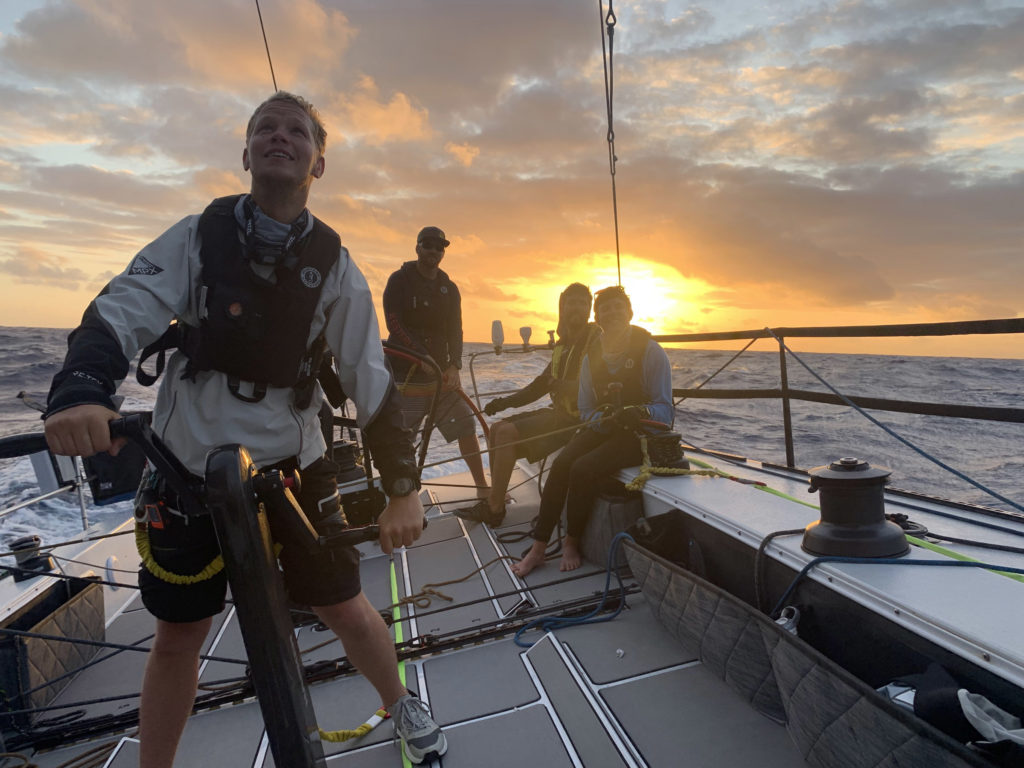
Billed as the fun race to Hawaii, the Pacific Cup marks its territory as a race that takes all comers on all boats of all shapes and sizes. The race starts just inside the Golden Gate Bridge in the iconic San Francisco Bay and has a fairly simple racecourse that ends in Kaneohe on the island of Oahu. With the north to south direction of the race, and the prevailing trade winds, it provides textbook open ocean downwind sailing, the kind of which racers the world over dream about. Clocking in at 2,070 miles, it is one of the longest yacht races on the planet and having run every other year for over 40 years, a solid bucket list item.
After the cancellation of the 2020 edition, this year’s race was set up to be something special as the pent-up demand for ocean racing was off the charts, and the competition did not disappoint. Apparently up here in the Northwest, a fair number of people had been daydreaming of sailing to Hawaii and it showed in the entry list. Of the 61 boats that took part in the race, eighteen of the entries hailed from the Pacific Northwest, a mixture of Canada-, Puget Sound- and Oregon-based boats spread throughout the various fleets from top to bottom.
As with many long-distance races, the fleets had a staggered start with the smaller boats taking off on the 4th of July with starts every day or two until the largest and fastest boats began their race on July 8. This reverse start concept allows for the fleets to be spaced out by several days with the objective of the all the boats arriving within a few days of one another to party together in Hawaii.
The small boats got underway with a festive send-off and were able to make their way out of the Golden Gate, but, unfortunately, as the fleet headed offshore the wind began to drop away. Thanks to a loosely formed pressure system in the Northern Pacific the first few days, many boats struggled to stay heading in the right direction and certainly put the navigators to the test. It was a game of “don’t lose focus” as all the racers tried day and night to keep moving and positioning themselves for the eventual wind forecasted to fill later in the race.
As the subsequent fleets started, it became a bit of a pile-up off the coast as the faster boats sailed out and into the same variable conditions, but wind slowly began to materialize, and we quickly began to see who had made the right calls early on to prepare for the developing wind.
Finally, the big and fast boats took off with the Disney family’s turbo-charged Volvo70 Pyewacket leading the way and chewing up the miles, with the rest of the big boat fleet entirely made up of Northwest teams at their heels. The big boats had the benefit of more breeze off the coast and made quick work reeling in the earlier starters. Then, as the wind began to shift further aft out in the Pacific, they really began to flex their muscles.
As the wind stabilized for the rest of the fleets off the coast, the boats finally found themselves getting into the rhythm and began the famous trade wind sailing to Hawaii. Taylor Joosten, onboard the Northwest-based Aerodyne 43 Freja, made a “chef’s kiss” with his hand while remarking; “Everyone, who’s done a race like this, talks about the Champagne sailing, but you don’t really understand how great it is until you experience it for yourself. Days on days of surfing under a full spinnaker, in shorts and a T-shirt, heading pretty much dead-on to Hawaii.”
To no one’s surprise, it was Pyewacket that crossed the line first, taking the class and overall win in the process and sailing the entire course in nearly exactly six days. Over the next few days, boats began to roll into the finish and after the times were corrected, we saw that it was an overwhelming win for the Pacific Northwest sailing community. Six boats out of the top ten call the Salish Sea home! Coming in at second place overall with his Santa Cruz 70 Westerly, Stuart Dahlgren summed it up well; “The Northwest went in force and CRUSHED.”
In addition to the big boat domination of the overall results, some amazing finishes were had within the earlier start classes as well, with Marc Andrea Klimaschewski and David Rodgers winning the Double Handed 1 on their Dogpatch 27 Moonshine, while Orcas Island locals Christina and Justin Wolfe finished second in the Double Handed 2 division on their J111 Raku. The rest of the scoreboard is covered in top finishes by Northwest boats, and it really goes to show that our little corner of the world makes for some seriously proficient sailors, especially in light and shifty conditions. It was certainly a race to remember, surely with a few parts that people would love to forget, but as with all things: If it was easy, it wouldn’t be worth it. I’ve got to give a huge congratulations to all the teams that took on the challenge.


